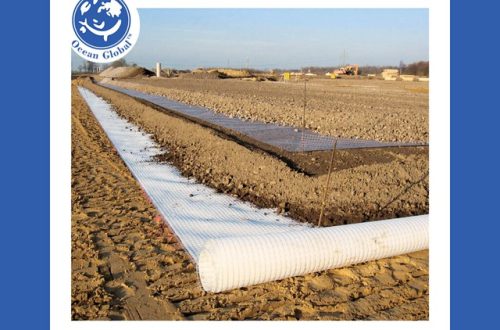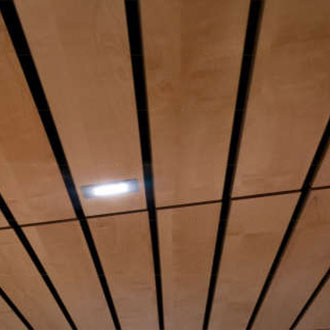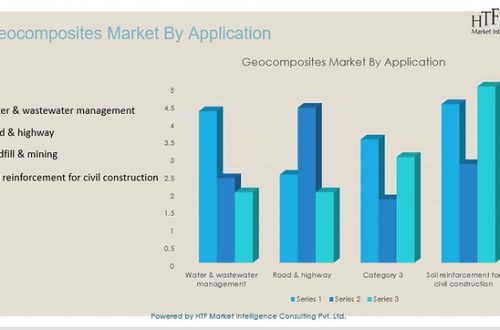Benefits of Geotextile in Construction
Benefits of Geotextile in Construction
Adding Geotextile to your construction project has many benefits including: separation, stabilization, filtration, reinforcement, protection, and drainage.
Woven and non-woven fabrics are commonly used to separate layers of different materials. They are commonly seen in highways and railways, harbor works, drains, and hillside erosion control applications.
Typically made from plastic fiber, woven geotextiles have high strength and elongation characteristics. They are also very chemically resistant.
Stabilization
Stabilization is one of the more common uses for Geotextile fabric. It’s often used as a base layer beneath driveways, road construction and rip rap projects. It allows for a greater amount of pressure to be distributed evenly, reducing the risk of rutting and shortening the life of the rock surface beneath.
This fabric can also be placed over wet compressible soil, allowing it to help stabilize the base and create a consistent level of support for the materials above it. This is especially useful when constructing retaining walls, on embankments or in areas with unstable subgrades.
Another way that Geotextile can be used for stabilization is by increasing the shear strength of a soil. Shear strength is the resistance or friction of soil particles sliding over each other, and Geotextile correctly implementing Geotextiles in the right situation can drastically increase shear strength.
Choosing the correct separation and stabilization fabric is important for long-term success of your project. Woven geotextile fabrics such as the LM 200 NT are designed to act as a type of barrier between your different soil products and help prevent mixing. The woven material is made from the polypropylene silt film fabric and offers a high level of strength to resist degradation from UV exposure, mildew and other environmental elements. Our woven fabric is the perfect choice for any location needing increased stability and separation.
Filtration
One of the primary functions of Geotextile is filtration. It allows liquids and soil to easily travel through the material without clogging or being trapped. This is beneficial in construction projects because it prevents unnecessary costs by reducing the amount of materials that must be added to the project. Woven or non-woven fabrics can be used for filtration, depending on the needs of the project.
Woven geotextiles are often used to separate soil for various construction projects. This enables the soil to retain its original integrity while being protected from contamination from underlying layers. This is especially useful in road construction, where the soil can be easily damaged by heavy trucks. Woven geotextiles are also commonly used in earth dams, behind retaining walls, and in deep drainage trenches.
The permeability of a geotextile filter depends on the size of its openings and the amount of soil that is trapped in these openings. It is important that the geotextile filter has adequate openings to avoid excessive soil migration and that the trapped particles are not too large as to clog these openings and affect the permeability of the filter.
This issue is addressed in a new publication available to prac- ticing designers through Mirafi, entitled “Geotextile Filter Design, Application and Product Selection.” This publication provides a systematic approach to solving most common filtration designs and is excerpted below.
Reinforcement
In soil construction, geotextiles improve the strength and stability of earth materials such as fill and sand for embankments. They also prevent erosion by filtering water and separating different layers of soil and rock. Moreover, they help reduce the cost of civil engineering projects by allowing work to be completed in areas that would otherwise be unusable.
The reinforcement function of a geotextile is a critical part of constructing an embankment, especially in wet and soft soil conditions. It prevents granular material from migrating upward into the subgrade and it can also help stabilize the basement layer and increase load-bearing capacity. Besides, it helps prevent erosion by passing and intercepting soil particles, fine sand, and small stones from reaching the surface of the subgrade.
Geotextiles can also be used to separate sand and soil, or new and old pavement. This prevents mixing the two materials, which can cause problems in a construction site. In addition, it allows drainage of water and increases the permeability of the ground.
Geotextiles can also be used to monitor the health of a geotechnical structure by monitoring changes in mechanical deformation, temperature, and humidity. In this way, the location of a geotechnical structure with high failure and damage risk can be found in advance and preventive maintenance can be performed.
Protection
Protection using geotextile is a key application. Geotextiles are used as a protective layer on top of soil and aggregate in retaining walls to prevent the erosion of the base material. This helps to strengthen the wall and increase its longevity. Geotextiles also help to control water erosion on bay shores and sea embankments.
In road construction, geotextiles protect roads from damage by stabilizing the soil and preventing erosion. They also non woven geotextile fabric manufacturers improve drainage by allowing water to flow through while preventing the migration of fines. This prevents the soil from clogging up the drainage system and reducing the risk of flooding and road damage (17).
Woven geotextiles can help to stabilize soils and limit erosion during construction projects. They function as a separation barricade between the soil and the aggregate, enabling water to flow through while keeping the sediments from mixing with the aggregate (18). This reduces the risk of erosion by increasing slope stability and decreasing the amount of aggregate needed (19).
Woven geotextiles are also used in landscaping and gardening to prevent weed growth in mulch or rock beds. They can be bonded to the ground with hot air or adhesives to keep them in place. They also serve as a barrier against wind and rain. They can be cut to fit the shape of the landscape or garden and have a high resistance to ultraviolet radiation (20). In addition, they are easy to install, saving time and resources during construction.


